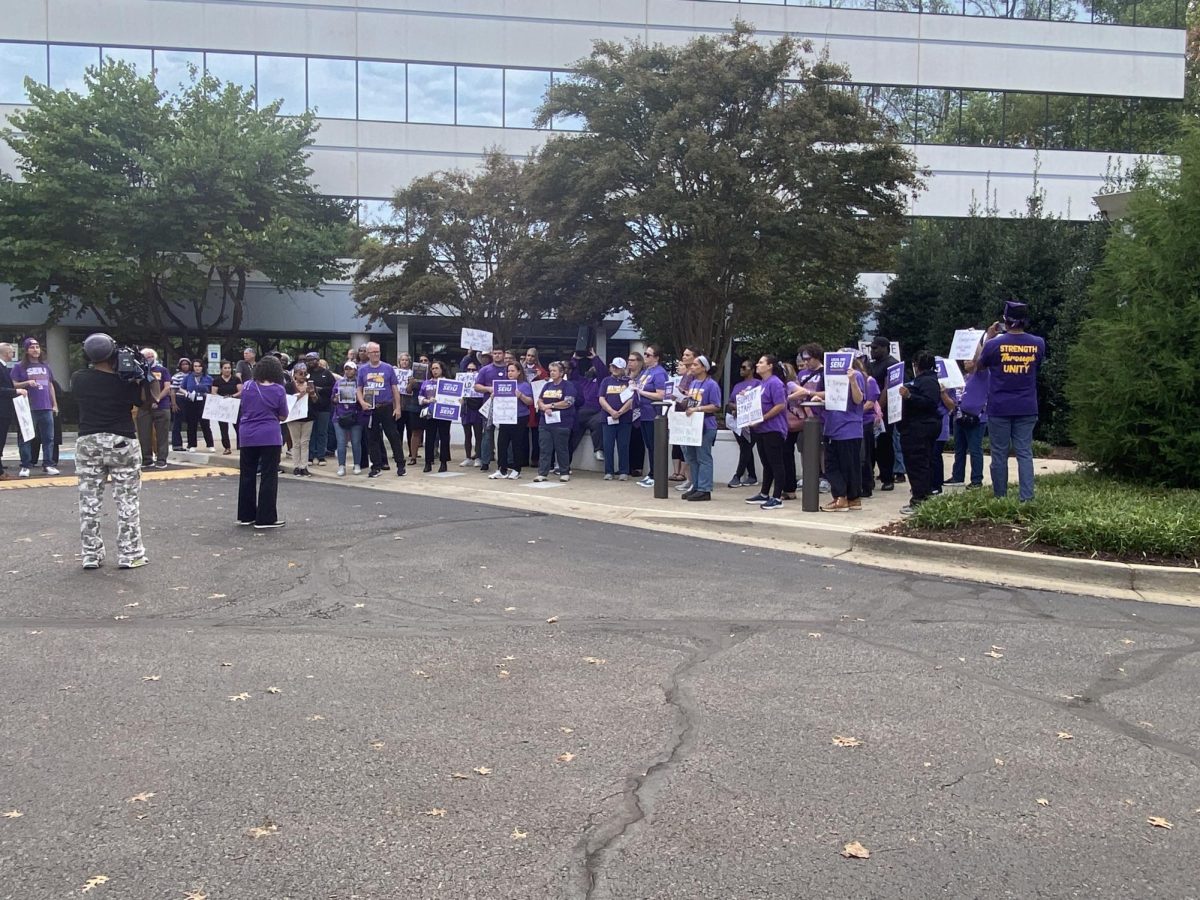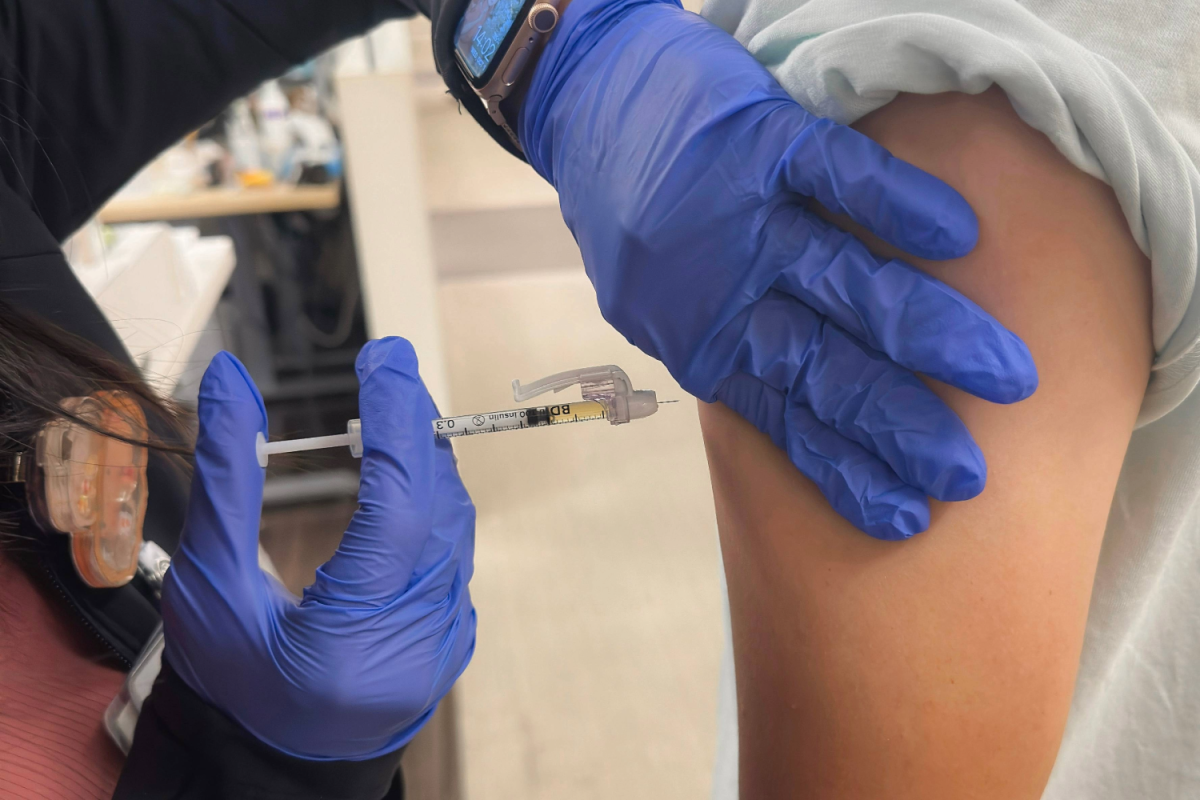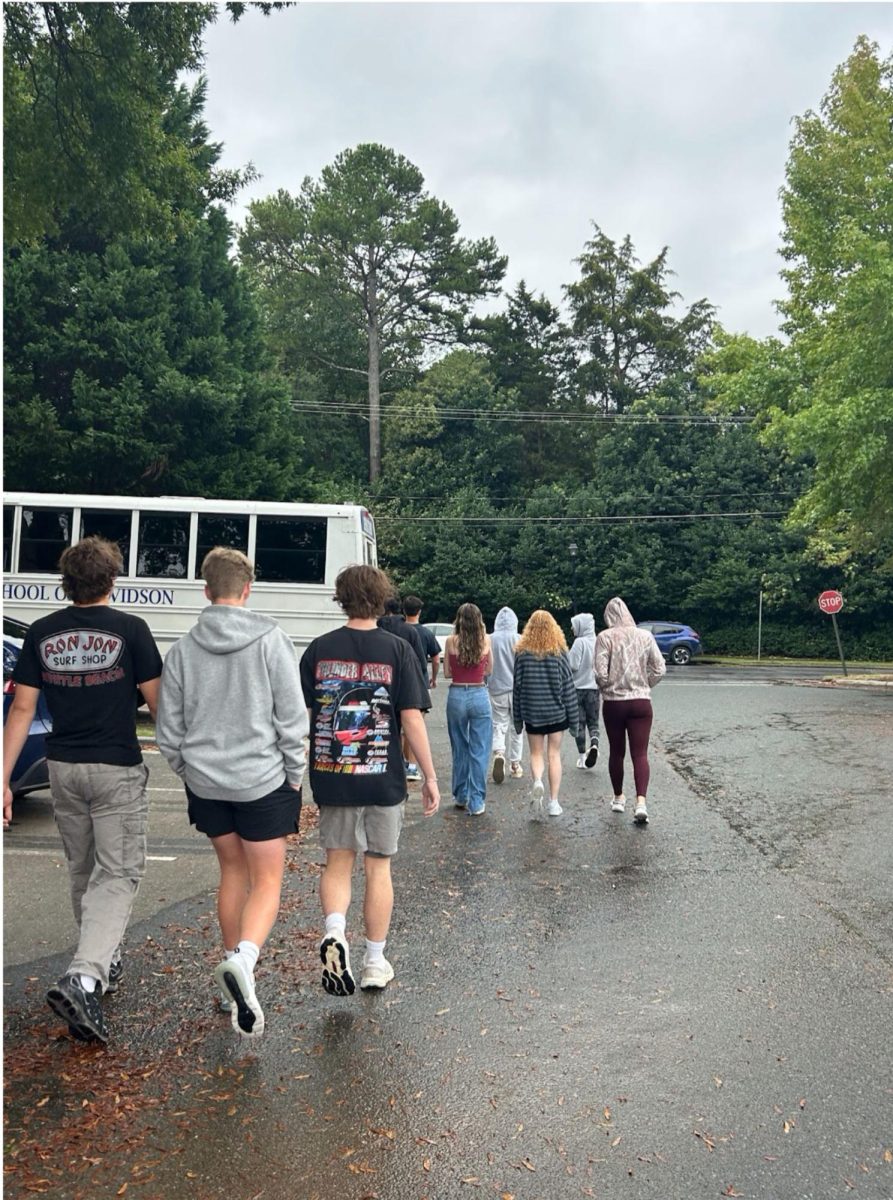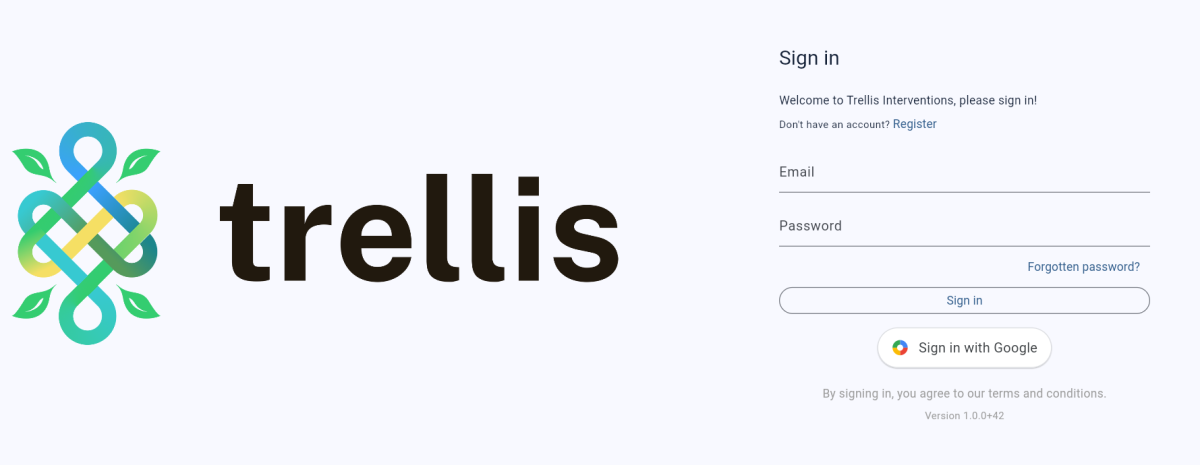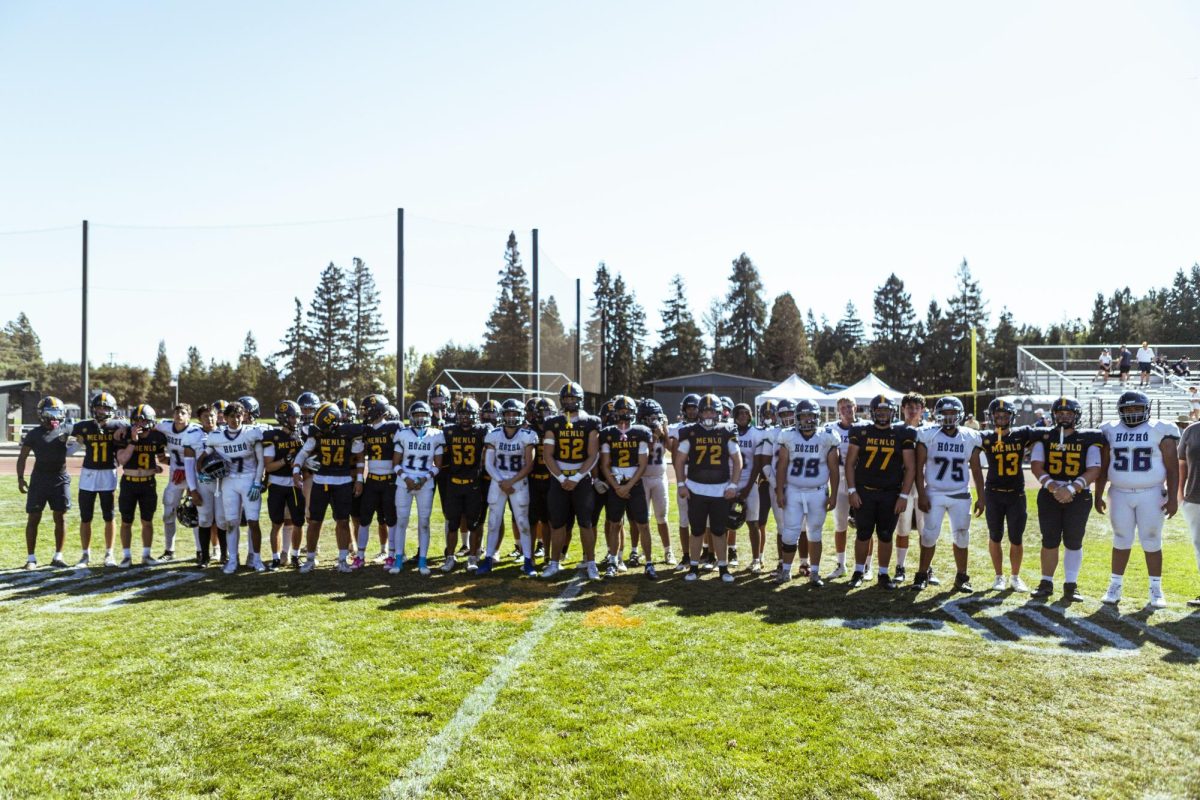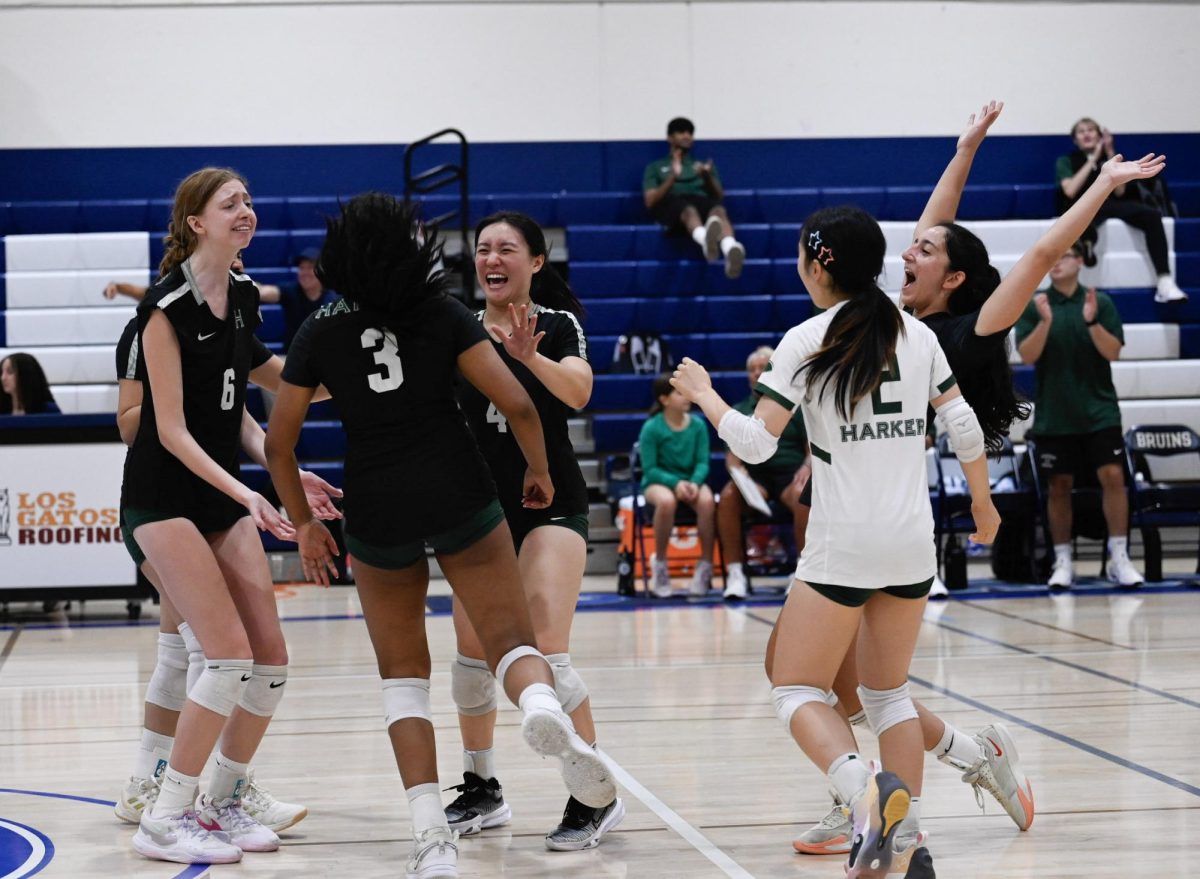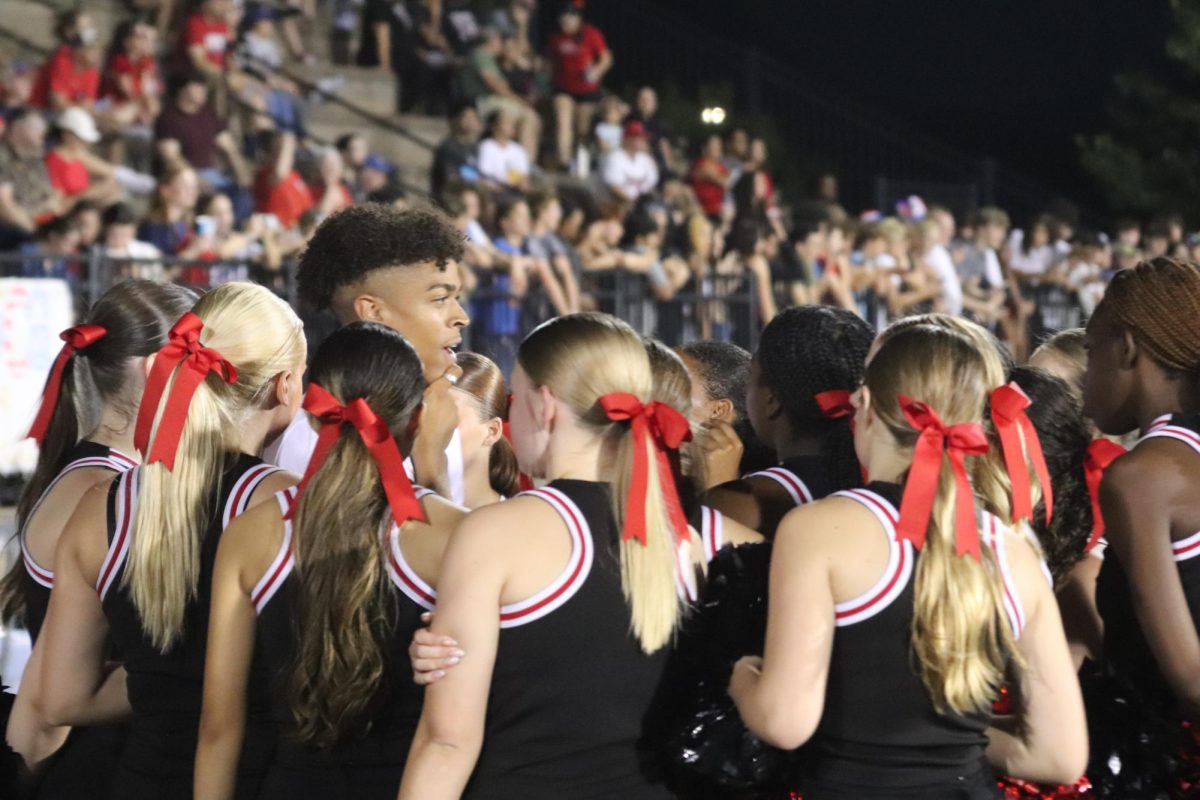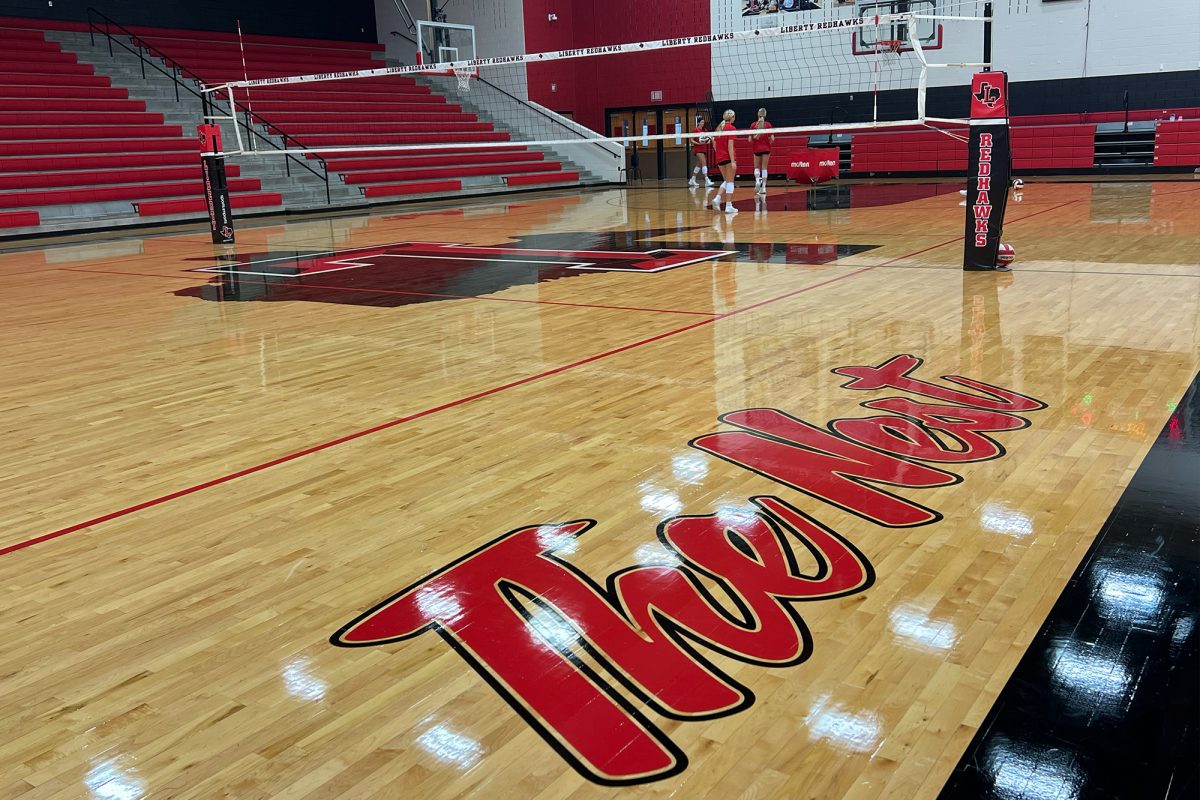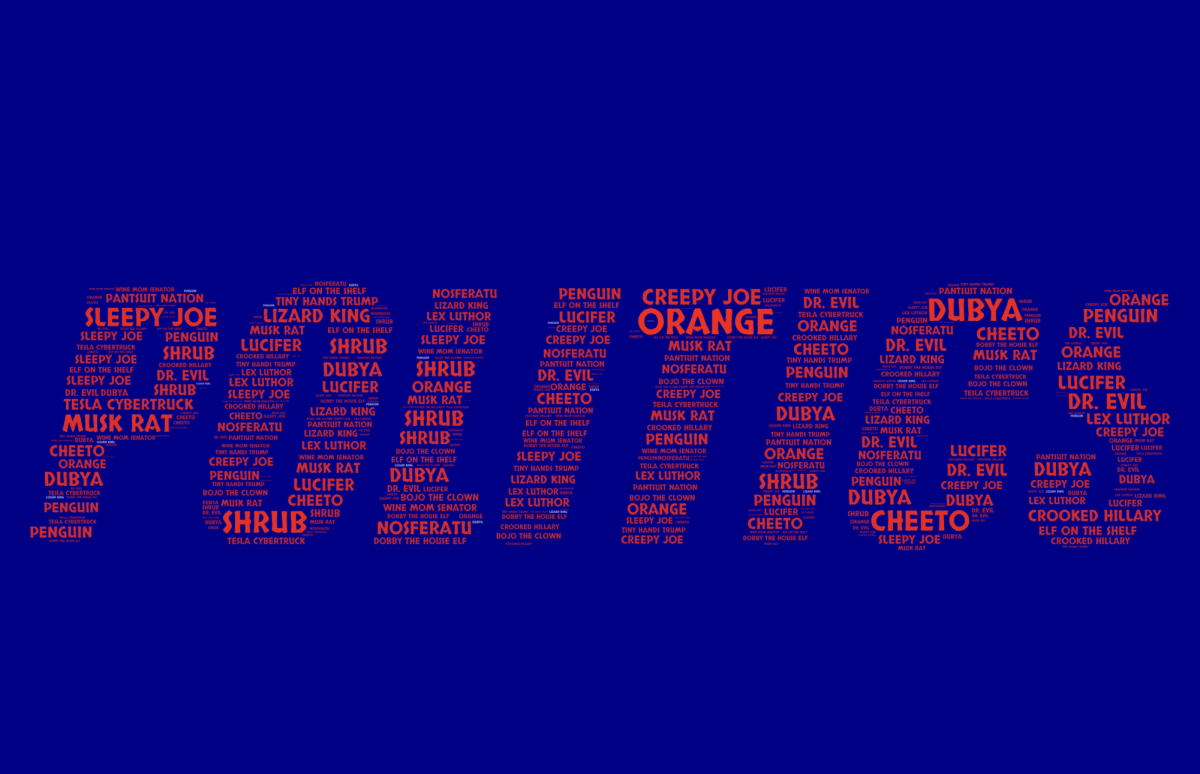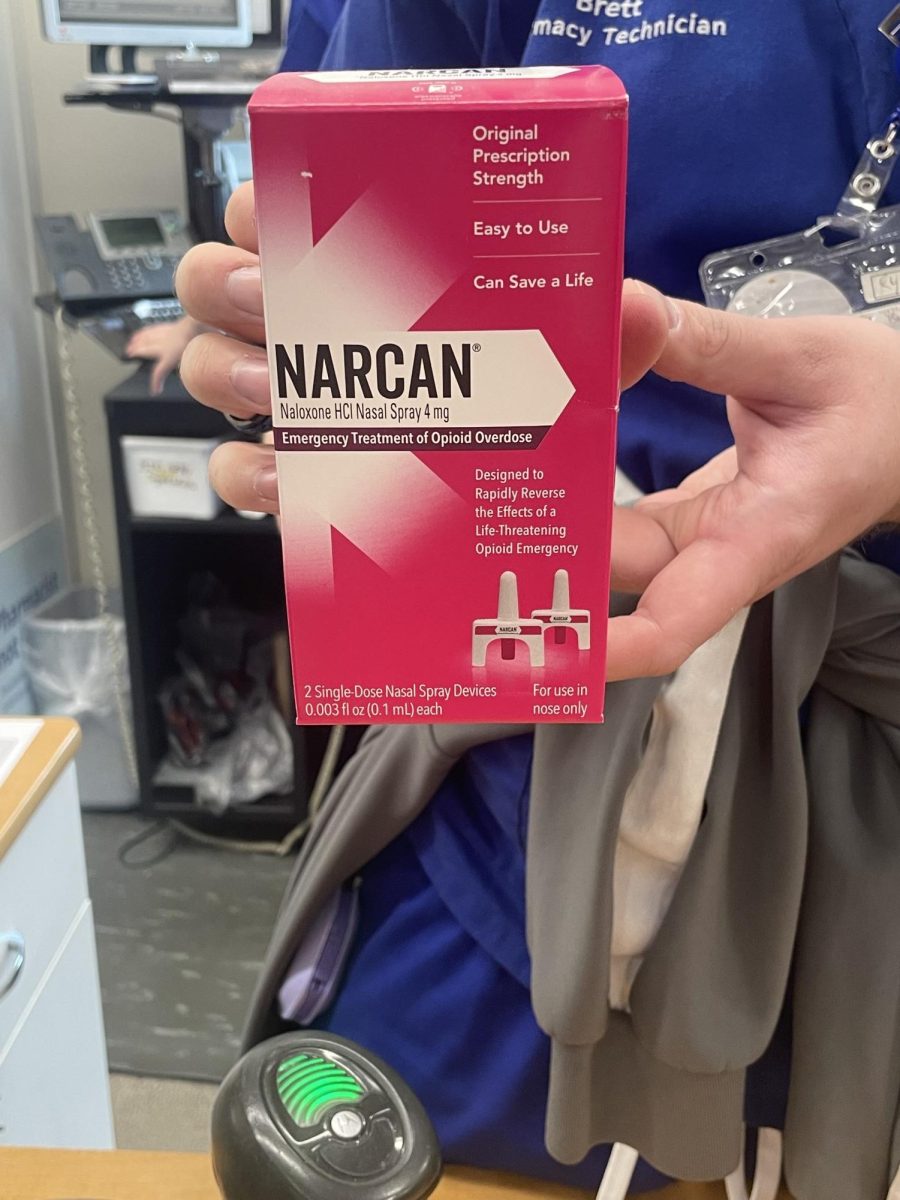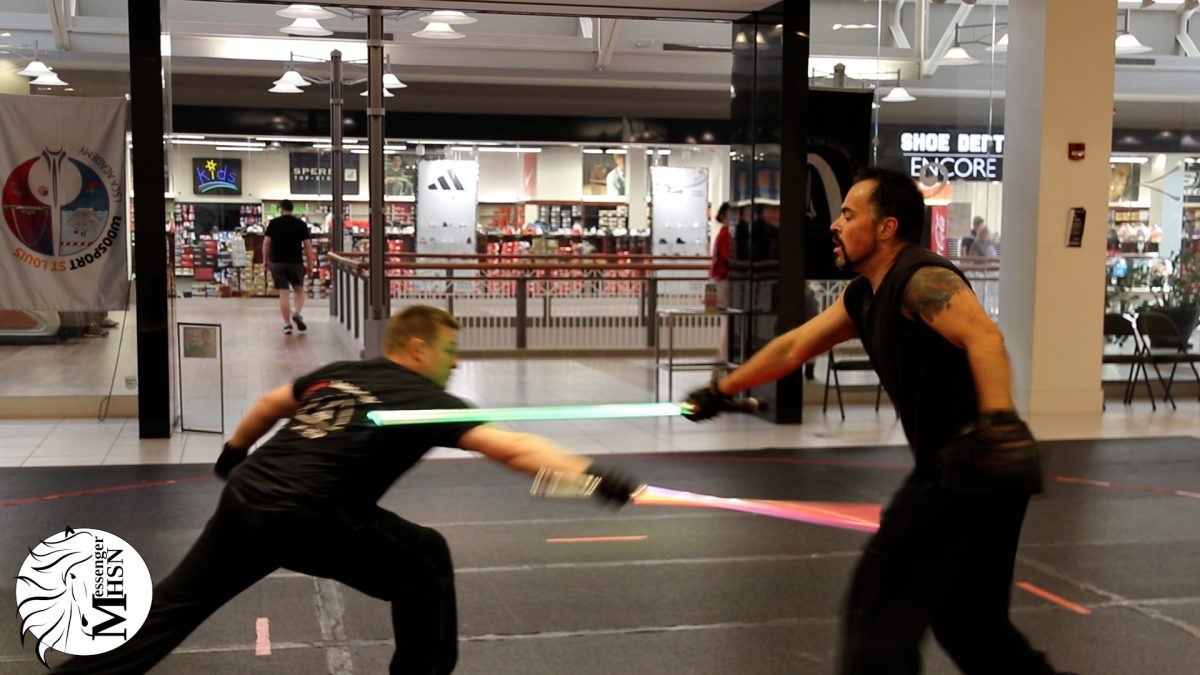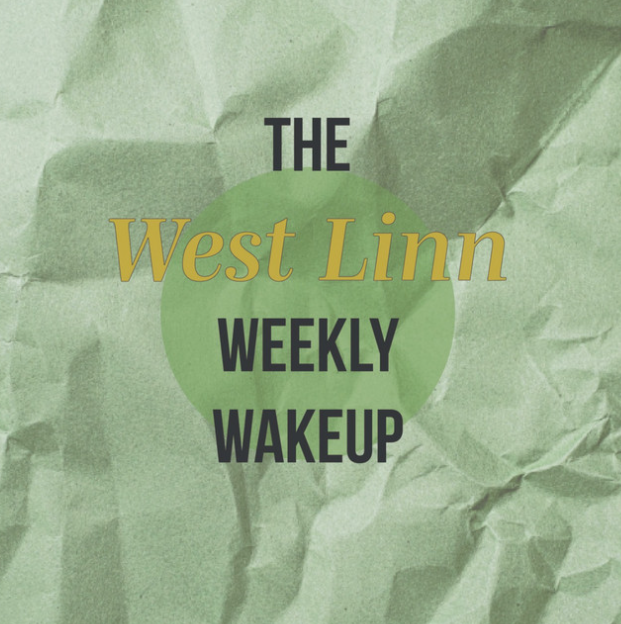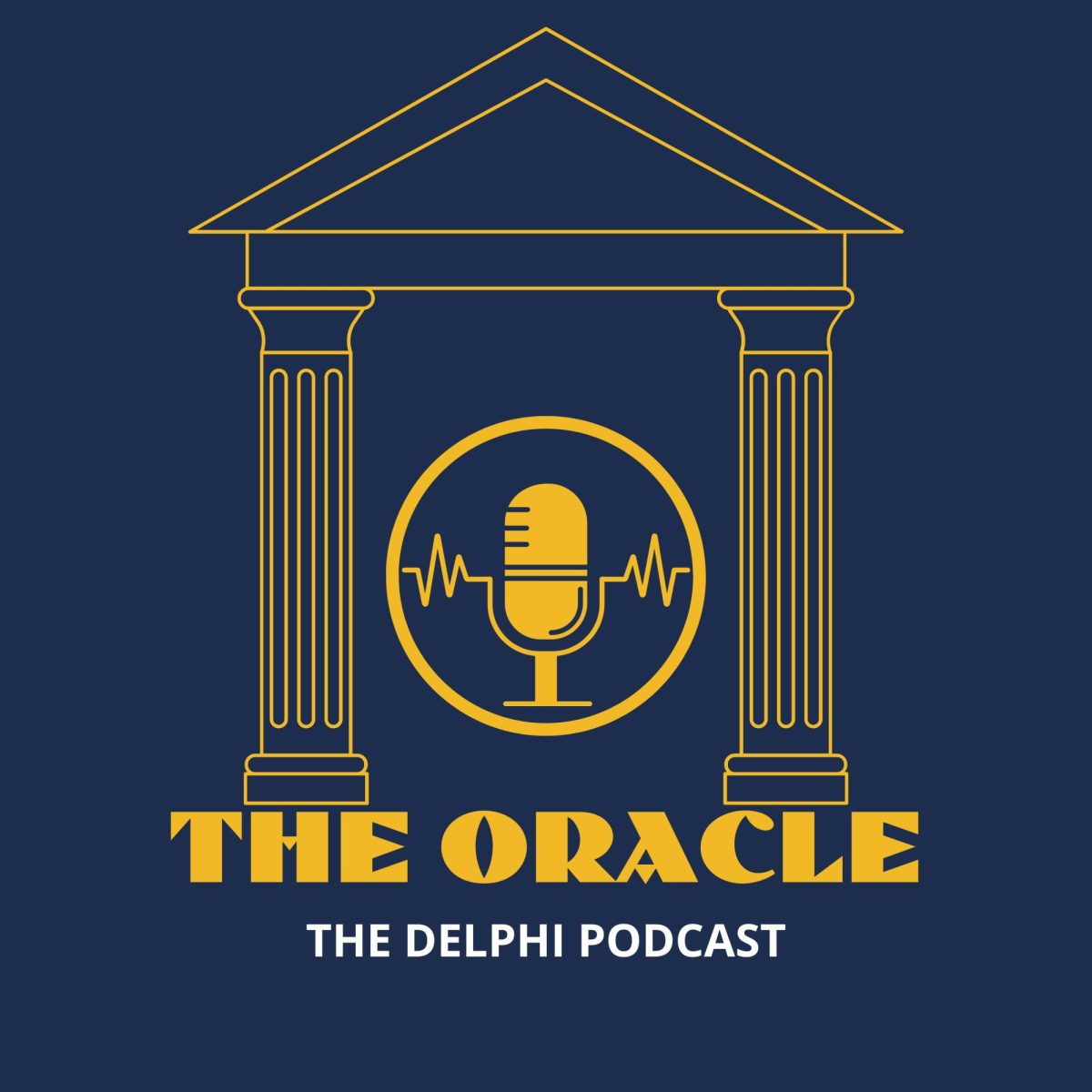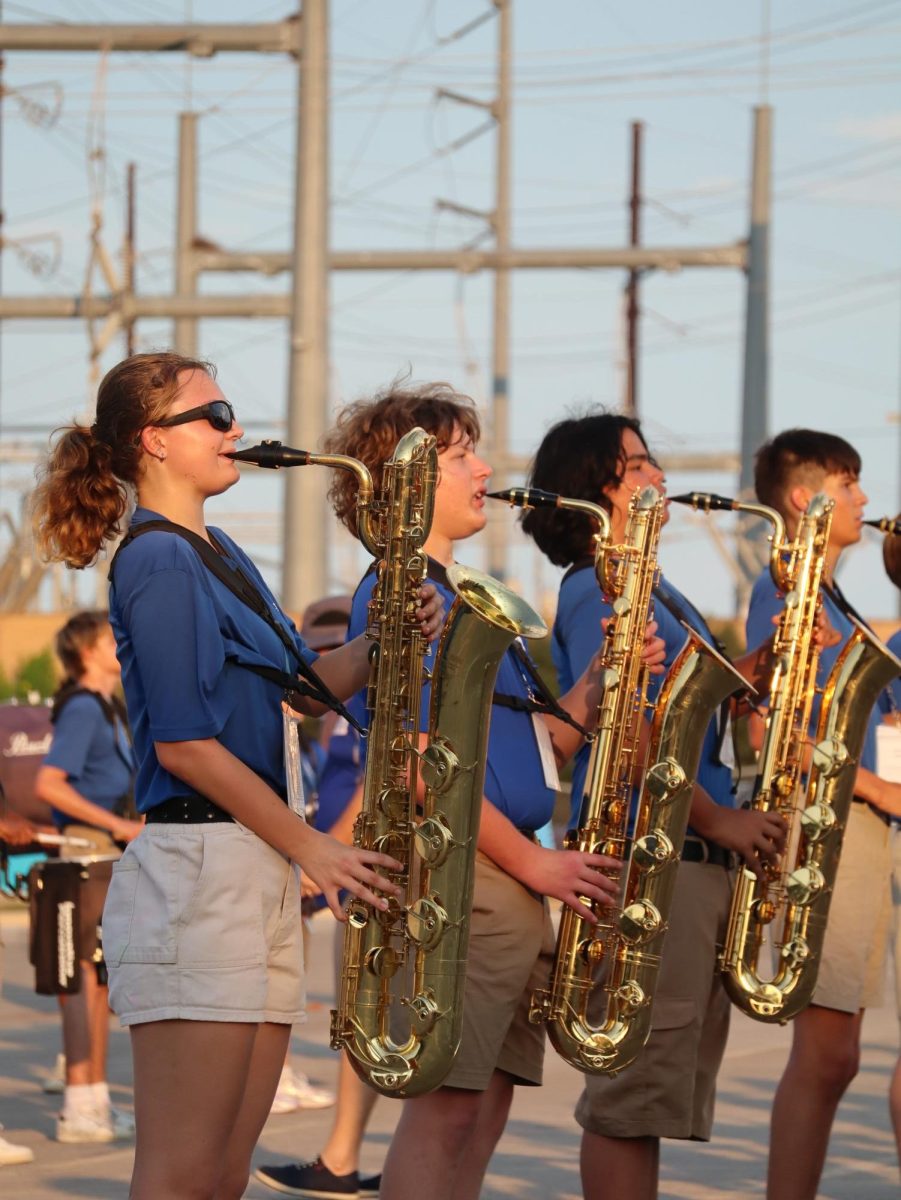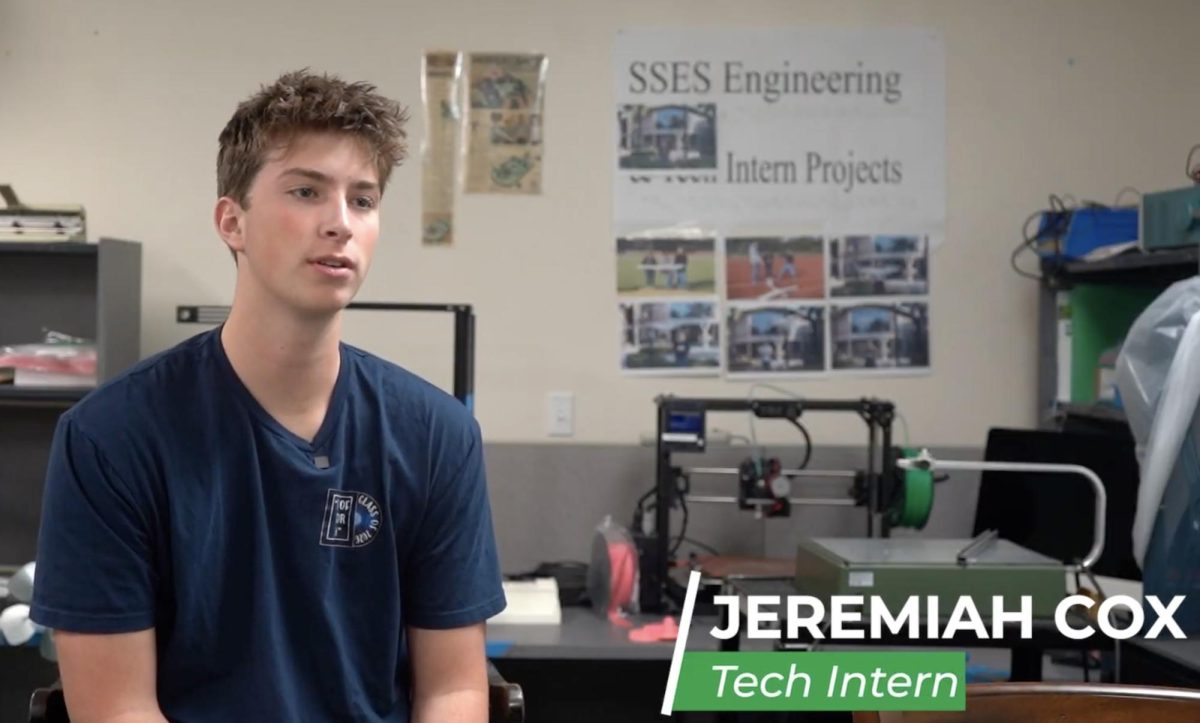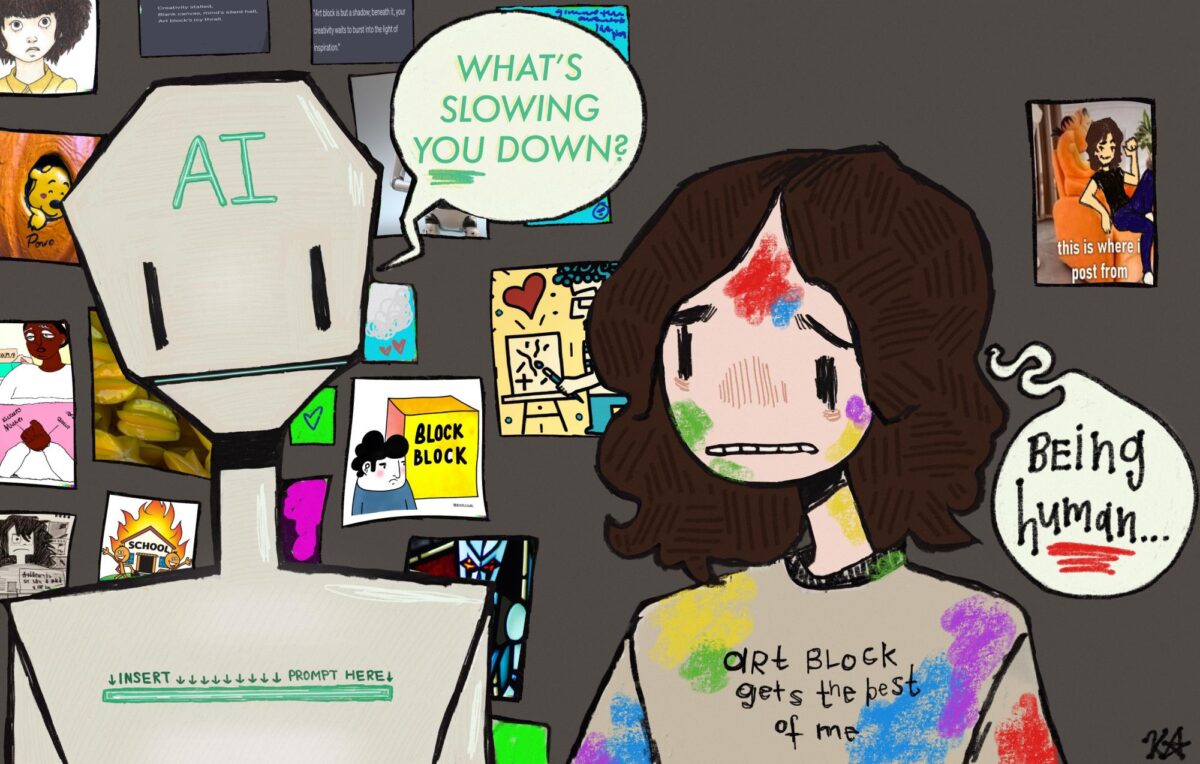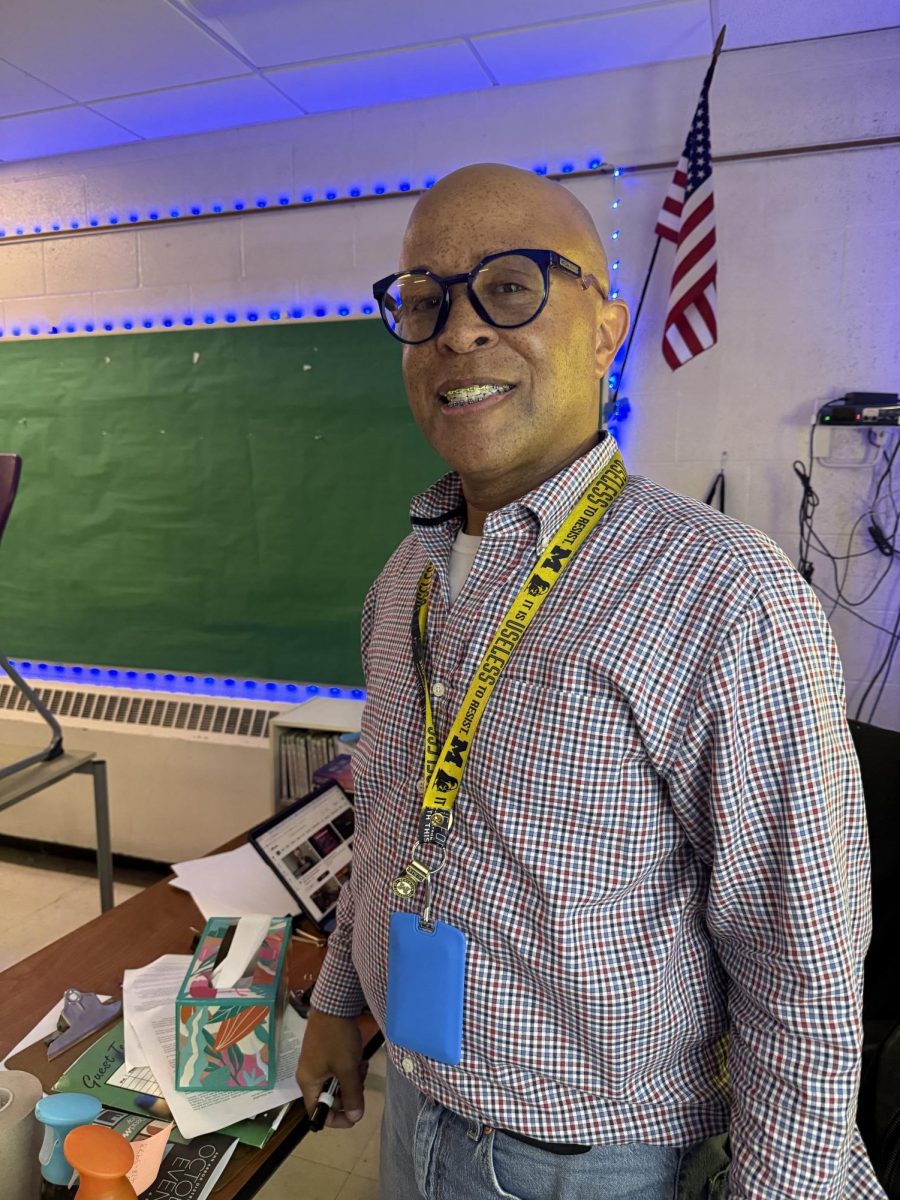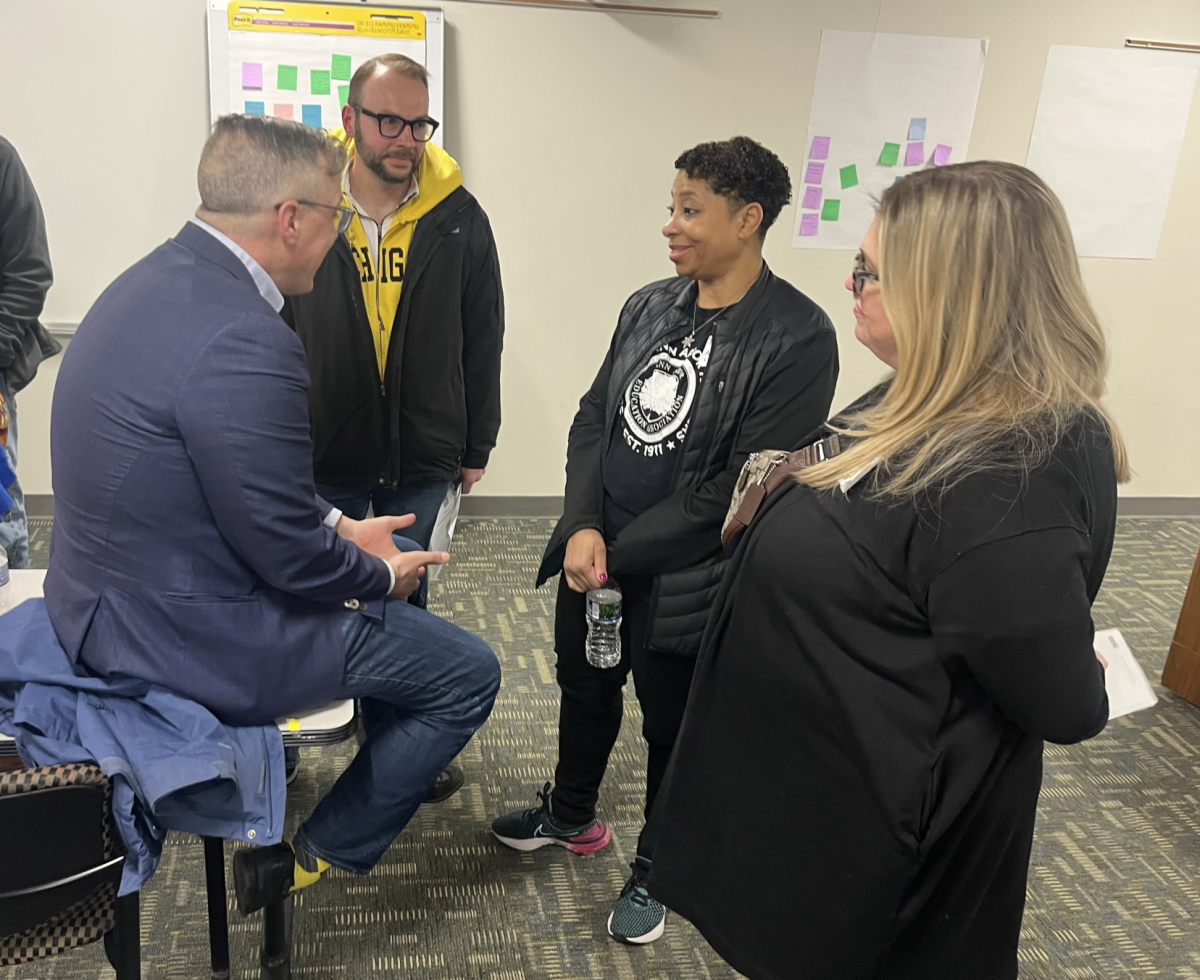“Welcome to a transformative journey through the educational landscape, where artificial intelligence converges with learning at Cannon Valley Schools. In this exploration, we delve into the innovative integration of AI, unraveling the ways it shapes educational experiences, empowers educators, and propels students into a future enriched by technology.”
The previous quote was not in fact composed by this author, but was written by ChatGPT, a product of the company OpenAI. Artificial intelligence has been put to use for numerous purposes in daily life. As of late, it has been applied to the education system. Although there are many hurdles when it comes to the use of AI in schools, the positives far eclipse the negatives.
While artificial intelligence is a ubiquitous phrase, there is a question as to what it means. In the words of eighth grader Addison Fogle, “AI is a robot that has its own mind and can come up with things on its own, and does not need to be programmed to say things.”
Albeit this is the definition of AI in the mind of a middle schooler, artificial intelligence pioneer John McCarthy describes AI differently. As stated by a Stanford University article, he describes it as, “the science and engineering of making intelligent machines.” According to Oxford Academic, the birth of artificial intelligence was around the 1950s. It started with a simple application that could play checkers, developed by renowned programmer Christopher Strachey. Today, it has progressed into convoluted systems such as self-driving cars and virtual assistants. AI has not only impacted today’s society, but also has a major influence on schools.
There are several detrimental effects on the education system due to the use of artificial intelligence by students. Dace Lauridsen, an eighth-grade student at Cannon Falls Middle School stated, “I think AI is helpful to some people to help learn new things, but I discourage it because most people can use it to cheat on homework and it can end up being dangerous if not handled properly.”
There are many ways a student can use AI negatively.

One resource is Quillbot, which is an online paraphrasing tool. Per high school English teacher Jade Fransen, students are able to use Quillbot to reword a sentence or paragraph; therefore, teachers are unable to find the source used online. Even something as simple as Grammarly can cause problems. Anne Davisson, an eighth-grade English teacher at Cannon Falls MSHS explained “Grammarly popped up while my students were taking a test on commonly confused words. They needed to use a specific word in a sentence and AI suggested corrections.”
Artificial intelligence has proven to cause ramifications when put to use by students.
AI has brought about complications when used by not only learners, but educators as well. There are many resources that teachers use to make their work easier. Teachers can request the system they’re using to create lesson plans. However, it doesn’t always work out as intended. If artificial intelligence isn’t given the correct prompt, errors can be made. Instead of “Cannon Falls Area Schools,” the first paragraph states “Cannon Valley Schools,” which isn’t accurate. Artificial intelligence similar to ChatGPT will only provide results based on the information given. Teachers can also use AI to provide assistance for students in a more direct way, between the child and the source.
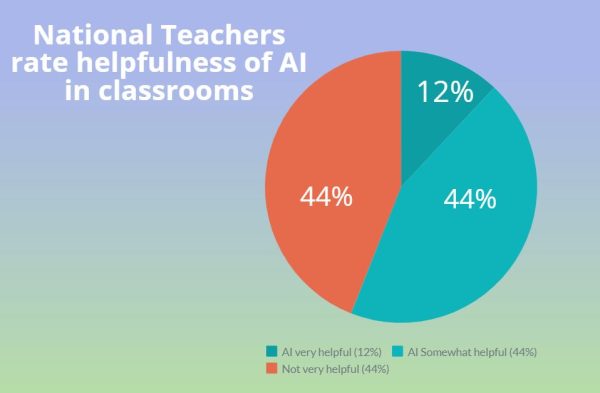
Despite those sites assisting educators in instructing children, teacher-student interactions are very important. According to the Harvard Advanced Leadership Initiative, the relationships between the two are not enforced. Therefore, the use of AI would only lead to a further decline of those bonds. Instead of connecting with a teacher, the child will be conversing with a computer screen. Nonetheless, when the right decisions are made, the positives of artificial intelligence seem to outweigh the negatives.
While there are many unfavorable results in terms of AI in schools, there are far more perquisites to using artificial intelligence — educators can use AI as another resource to teach their class. As explained by Tech & Learning, one example that displays this sufficiently is Khanmigo. The widely used learning resource Khan Academy paired with the company Open AI, and created Khanmigo, a more personalized tutoring program for students and teachers alike. It can easily provide educators with specified lesson plans. Not only that, but Khanmigo helps learners one-on-one, giving them the opportunity to learn without that fear of judgment. Elaborating on that, Claire Chen of Stanford University states, “Teachers commonly encourage class participation by insisting that there is no such thing as a stupid question. However, for most students, fear of judgment from their peers holds them back from fully engaging in many contexts.”
Through the use of a resource such as Khanmigo, learners wouldn’t have to worry about being judged by fellow classmates. Furthermore, artificial intelligence seems to be able to help children with learning disabilities by catering to their unique needs and learning skills. An attribute of AI is that it changes depending on what it learns, such as a human might. It does just that, adjusting to the student rather than the standard learning pathways, and teaches using its knowledge of the learner. This displays that AI will benefit a child’s learning regardless of the adverse effects.
While AI can give students the resources to succeed in school, it can simultaneously help educators do their jobs. Various teachers at Cannon Falls MSHS have made use of artificial intelligence in different ways.
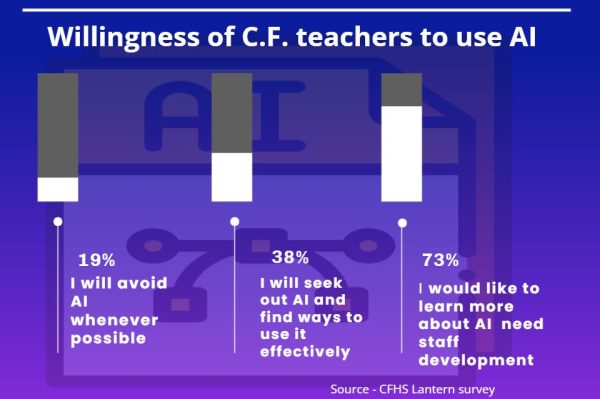
According to a survey conducted by The Lantern, nine out of 16 educators have utilized skill development like Khan Academy to make teaching easier. Plagiarism software, such as Turnitin.com, helps detect when a student is using other resources without proper citation.
AI has proved itself practical in the world of education, but the question is how to utilize it. The Office of Educational Technology provides numerous recommendations for the modern use of AI in schools. The authors state, “Teachers and other people must be ‘in the loop’ whenever AI is applied in order to notice patterns and automate educational processes.”
Simply put, when teachers are using artificial intelligence, it should be working alongside the educator and surveilled closely. The Office of Educational Technology also discloses that new educational advancements are often hard to have faith in. The writers go on to say, “Because trust develops as people meet and relate to each other, we call for a focus on building trust and establishing criteria for trustworthiness of emerging educational technologies within the associations, convenings, and professional organizations that bring educators, innovators, researchers, and policymakers together.”
All in all, artificial intelligence shouldn’t be handled as a replacement for teachers, but rather as a way to assist educators and improve the quality of learning for students.
Evidence has shown that AI has many downsides, but when used properly, it is more beneficial rather than harmful. Whether educators choose to face the subject or not, the use of artificial intelligence in schools is inevitable. Hence, it should be operated with caution and care. AI holds an important role in the future of education, and it shouldn’t be ignored. As stated by artificial intelligence itself, “ChatGPT relies on the information it has been trained on, and it doesn’t have inherent knowledge of the world. If provided with incorrect or inaccurate information during training, it may produce responses that reflect those inaccuracies. What could go wrong? Go wrong? Go wrong?”
This story was originally published on Lantern on January 8, 2024.

